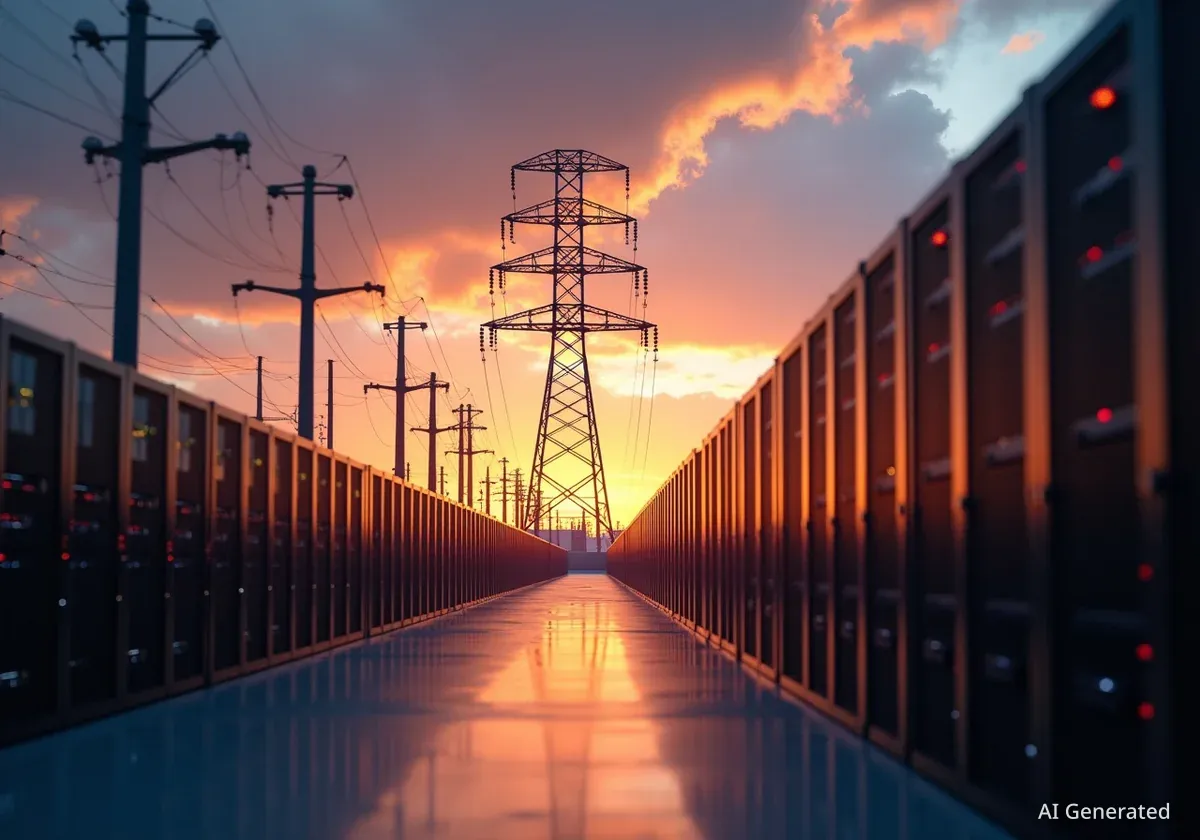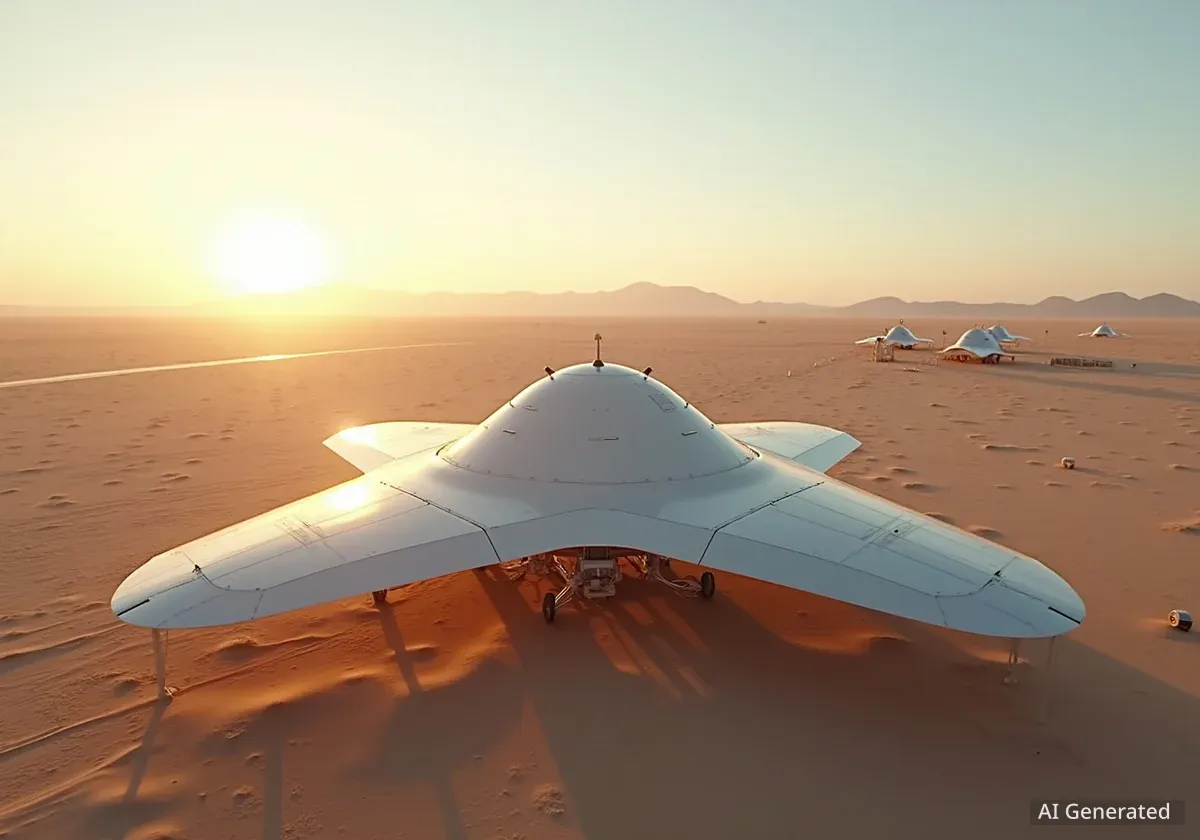BlackRock, a leading asset manager, is strategically positioning itself to address the growing demand for electricity. This move comes as the generative artificial intelligence (AI) sector continues its rapid expansion, requiring significant power resources. The firm's new initiatives aim to capitalize on this increasing energy need, which is fundamental to supporting advanced AI operations.
The generative AI boom is driving unprecedented electricity consumption. Data centers, which house the powerful computing systems required for AI, are becoming major energy users. BlackRock's investment strategy reflects a direct response to this market shift, seeking to align its portfolio with critical infrastructure supporting future technological growth.
Key Takeaways
- BlackRock is investing in infrastructure to meet rising power demand.
- The generative AI industry is a primary driver of this increased electricity need.
- This strategic move positions BlackRock to benefit from AI's continued expansion.
- Energy infrastructure is becoming a critical component of the tech sector.
Generative AI Fueling Energy Consumption
The rapid evolution of generative AI, exemplified by large language models and advanced image generation, requires substantial computational power. These operations are not only intensive in terms of processing but also in their energy footprint. Running complex AI algorithms and training new models demands continuous, high-volume electricity.
According to recent industry reports, the energy consumption of AI data centers is projected to increase significantly over the next decade. Some estimates suggest a doubling of power demand in certain regions by 2030, directly attributed to AI development and deployment. This trend highlights a critical bottleneck for the industry: access to reliable and abundant power.
For instance, a single AI training run can consume as much electricity as several homes over a month. As AI models grow larger and more sophisticated, their energy requirements scale proportionally, creating a sustained demand for power generation and distribution infrastructure.
Fact: AI's Energy Footprint
- Training a single large AI model can consume over 2,800 gigajoules of energy.
- This is equivalent to the lifetime carbon emissions of five cars.
- Data centers globally could account for up to 3% of total electricity consumption by 2025.
BlackRock's Strategic Investment in Power Infrastructure
BlackRock's decision to focus on power infrastructure is a calculated move to capitalize on these market dynamics. The asset manager aims to invest in projects that enhance energy supply and grid stability, which are crucial for supporting the burgeoning AI industry. This includes investments in power generation, transmission, and distribution assets.
The firm has historically shown an interest in infrastructure investments, recognizing their long-term value and stability. By linking these investments directly to the growth of AI, BlackRock is creating a synergy between two powerful economic forces. This approach allows them to participate in the tech boom from an essential foundational perspective, rather than directly investing in volatile tech stocks.
"The future of AI is intrinsically linked to the future of energy. Ensuring a robust and sustainable power supply is not just an environmental imperative, but a fundamental economic necessity for technological advancement," a BlackRock representative stated in a recent internal briefing.
This strategy not only addresses the immediate energy needs of AI but also positions BlackRock to benefit from broader trends in electrification and digital transformation.
The Role of Data Centers in AI Growth
Data centers are the backbone of the AI revolution. They are massive facilities housing thousands of servers that process, store, and transmit digital information. Each server rack consumes significant power, and the cooling systems required to prevent overheating add further to the electricity demand.
The location of these data centers is often dictated by access to affordable and reliable power. As AI applications become more widespread, from autonomous vehicles to advanced medical diagnostics, the need for localized, high-capacity data centers will only increase. This creates a sustained demand for new power grid connections and upgrades to existing infrastructure.
Context: Generative AI
Generative AI refers to artificial intelligence systems capable of producing new content, such as text, images, audio, or code. Unlike traditional AI that analyzes existing data, generative AI creates novel outputs based on patterns learned from vast datasets. This technology is driving innovation across various industries, from content creation to drug discovery.
Meeting Future Energy Demands
Addressing the future energy demands of AI will require a multi-faceted approach. This includes not only expanding traditional power sources but also investing in renewable energy solutions and advanced grid technologies. BlackRock's strategy is expected to encompass a diverse range of energy assets.
Investments could target renewable energy projects, such as solar and wind farms, which offer a sustainable pathway to power AI. Additionally, energy storage solutions, like large-scale battery systems, could play a vital role in ensuring grid stability and continuous power supply for data centers. The development of more efficient cooling technologies for data centers is also a key area of innovation.
The collaboration between financial institutions, energy providers, and technology companies will be essential to overcome the energy challenges posed by AI's growth. BlackRock's proactive stance highlights the increasing recognition of this interdependency across industries.
Long-Term Market Implications
The integration of AI and energy infrastructure is set to reshape investment landscapes. Companies that can effectively manage their energy consumption and secure reliable power sources will gain a competitive advantage in the AI sector. Similarly, energy companies that can adapt to the specific demands of AI data centers will find new growth opportunities.
BlackRock's move could also encourage other major asset managers to follow suit, leading to increased capital flow into energy infrastructure. This could accelerate the development of new power generation and transmission projects, ultimately benefiting global energy security and supporting the broader digital economy.
The long-term implications extend beyond direct financial returns. A stable and sustainable energy supply for AI is critical for its continued development and its potential to address global challenges, from climate modeling to healthcare innovation. Investing in this foundation is seen as investing in the future of technology itself.





